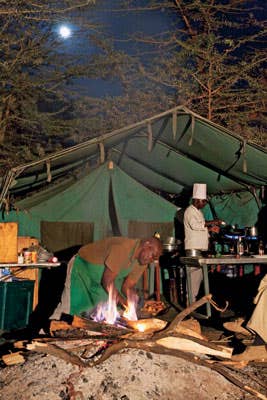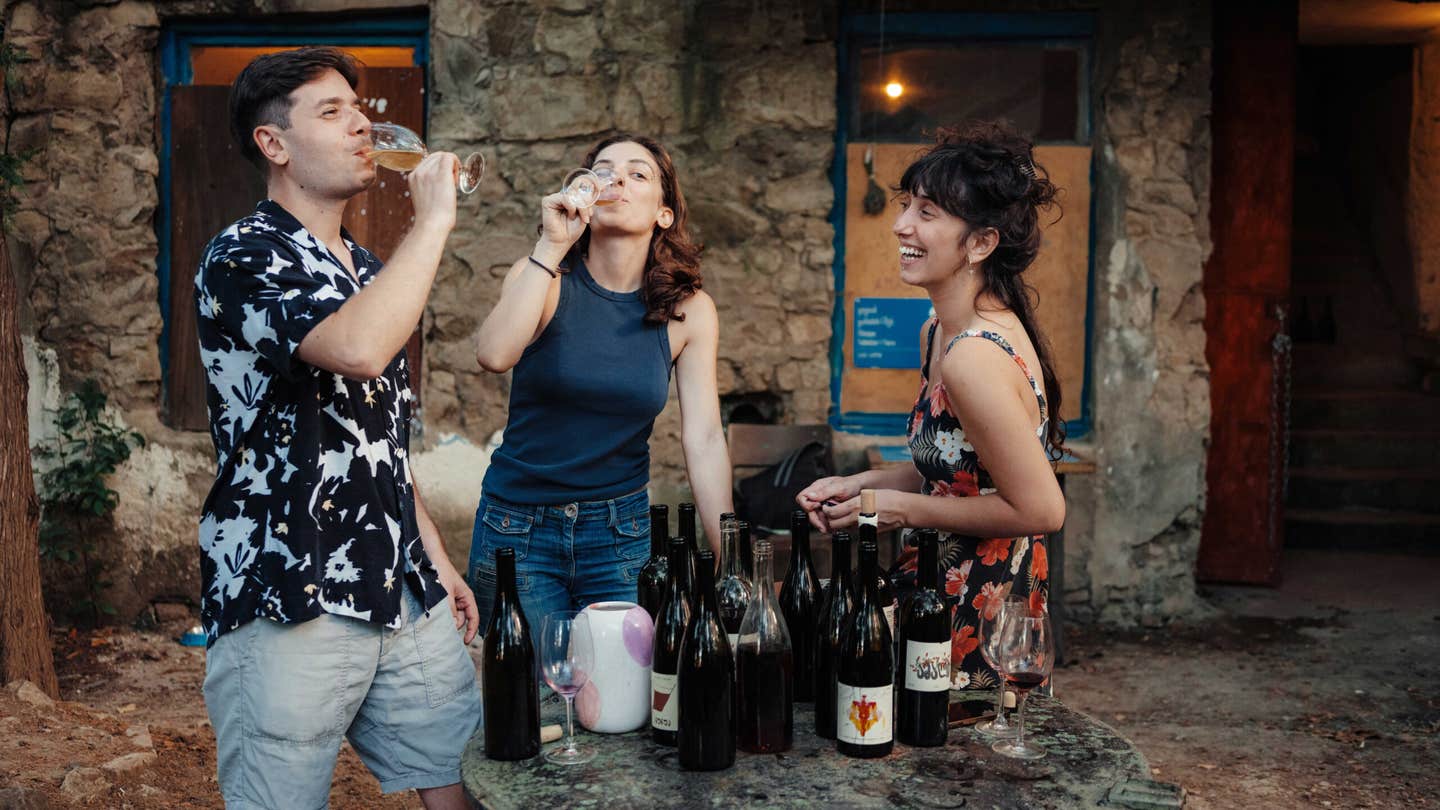
On a sweltering morning last November, I awoke in the middle of the Lewa Wildlife Conservancy, at the gateway to the Laikipia Plateau nature reserve in Kenya, to the aroma of freshly baked bread. Outside my tent, Hezron Ayodi, dressed in a crisp white chef's toque and a green apron, was tending a tin stove buried deep in the still-smoldering coals of the previous night's fire. From the oven, he proceeded to remove a tray of freshly baked scones, which were paired with a breakfast spread that included local specialties, like papaya drizzled in lime juice, and not-so-local ones, like fresh croissants, also baked in that open fire.
There's something inherently incongruous about eating this well out in the bush. Safaris have traditionally meant hunting, and safari cooking used to signify just one thing: fresh meat—antelope, elephant, giraffe, or even (in the famous case of Ernest Hemingway) lion. But even in the earliest days of the African safari, meat from the day's hunt was often supplemented by comforts that hunters and explorers took along with them and prepared in the bush. For a yearlong trek across the Kalahari Desert in 1849, Dr. David Livingstone towed along two wagons' worth of food, including 300 pounds of coffee, 400 pounds of sugar, and copious quantities of mustard, cheese, and brandy.
Not long after that, wilderness meals became a much more lavish affair: in 1908 a hunter named Abel Chapman chronicled a meal of marrow soup and gazelle cutlets made decadent with puddings of corn flour from Glasgow and peaches from Australia, all served alfresco on a table "smart in clean white napery and brightly-burning lamps." A year later, Teddy Roosevelt embarked in Kenya with a staff of 500, which prepared feasts of wildebeest from mobile kitchens. In 1904, the Nairobi-based safari operator Newland, Tarlton & Co. pioneered "champagne safaris," sumptuous hunting trips featuring pate and caviar imported from London. Before long, bush planes were shuttling indulgences like ice cream into the wilderness.
In the mid-20th century, when the conservation movement effectively brought the era of the hunting safari to a close, the cooks whom tour operators hired were forced to get creative. "The idea was 'Don't shoot with a gun; shoot with a camera,'" says Geoffrey Kent of the London-based travel company Abercrombie & Kent, the safari operator that organized my trip to Kenya. "So we couldn't rely on hunters for fresh meat." In 1962, Kent built the first refrigerated safari truck to offer fresh food. In those years, the cuisine was classically British: beef Wellington, Yorkshire pudding, treacle tarts.
Today, chefs like Ayodi, a 68-year-old Luhya tribesman from a village near the safari base who has worked as a safari chef for more than 40 years, prepares meals more ambitious than ever: fresh olive bread made with local wild olives, a savory lentil pie, slow-cooked lamb shanks, and more. Sure, some of the food represents the kind of pan-global culinary trends you find in resorts everywhere—Thai beef salad and mango crepes—but Ayodi also culls from the local larder and from culinary traditions he grew up with. Two of his standby dishes are pumpkin soup flavored with coriander and a Kenyan white cornmeal porridge called sadza.
Despite the challenges of cooking outdoors, Ayodi says, his work is no different from that of a chef working anywhere. "We just try to make food so people feel at home," he said, as an ostrich walked by.
Keep Reading
Continue to Next Story










